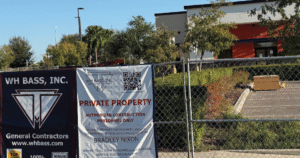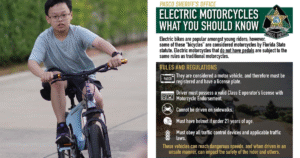
By Matt Wiley
Attention Wesley Chapel commuters: if you could, would you pay a little extra to avoid snarled interstate traffic on the way to work? The Florida Department of Transportation (FDOT) hopes so, as it has announced a concept that could add express toll lanes to several of the Tampa Bay area’s most congested interstate highways. One of those express lanes could begin and end just south of Wesley Chapel.
A public workshop was held in conjunction with the Federal Highway Administration (FHWA) on January 29 at T. Pepin’s Hospitality Centre in Tampa to gather input from the public about the proposed express toll lane project, entitled “Tampa Bay Express.” More than 100 people attended to learn more about the proposed toll lanes and put in their “two cents” on the idea.
The project’s website (TampaBayExpress.com) explains that, although FDOT still is in the process of developing a Master Plan for the projected $6-billion project, express toll lanes could be constructed alongside existing interstate lanes on I-75, I-275 and I-4 to ensure “reduced congestion, greater mobility, fewer delays and more predictability in traffic times.”
One or two toll lanes are proposed in either direction for I-75 from south of U.S. 301 (near the Fowler Ave. exit in Temple Terrace) to north of the Bruce B. Downs (BBD) Blvd. interchange in New Tampa. Another express lane is proposed for along I-275 from north of Martin Luther King, Jr. Blvd. to north of Bearss Ave. However, no express toll lanes are proposed near or north of the apex of I-75 and I-275 near the S.R. 56 interchange, where traffic regularly stacks up during the daily rush hours.
FDOT spokesperson Kris Carson says that “the initial traffic and revenue study by the (Florida) Turnpike Enterprise did not show enough of a demand for an express lane in that area. An additional lane may be needed in the future, but the congestion doesn’t get bad enough to support tolling the additional lane.” Carson adds that there always is the opportunity to re-assess the need in a future study for the apex area. where I-275 ends and merges with I-75, near the Pasco County line.
Carson says that this project is still in its early stages and notes that the agency is in the process of gathering input to see if the concept is something that Tampa Bay-area drivers will accept and use.
“We do not have funding (for the project) at this point,” Carson explained, adding that the estimated cost of the project could be more than $6 billion. “Due to the congestion in the Tampa Bay area, we are studying a traffic management concept that has helped cities across the nation improve traffic flow.”
Because funding is not yet available and the Master Plan has not been completed, an official timeframe for this project has not yet been proposed, but Carson says that the project is something years down the road and it could take up to a decade to complete the necessary traffic studies and obtain funding.
“We’re just introducing the idea and seeing what people think,” Carson said. “Right now, we just want to get information (about the concept) out to the public. These lanes will be good for people that are running late and we want to be able to give people that option. What we’re trying to find out now is if people would use (the toll lanes).”
Alan and Patricia Cohn, of Grand Hampton, said that even after seeing the project’s concept displayed in detailed maps at the meeting, they still had more unanswered questions.
“We want to learn more about it,” Alan said. “Will it actually solve the (congestion) problem? How long will it take? How will it be paid for? The bottom line is that something has to be done because our population in New Tampa is growing, but our roads and highways aren’t expanding at a capacity to accommodate that growth.”
Alan also pointed out that because the lanes are tolled and that the toll prices will fluctuate based upon demand, some people probably wouldn’t be able to take advantage of them.
Seminole Heights resident Frank Ender said that he’d much rather see a mass transit system like light rail instead of an express lane, although Carson noted that the lanes could accommodate an express bus route.
“I think an express lane will help (congestion) eventually,” Ender added. “But, I’d much rather just see another normal lane or light rail.”
Eitan Green, also of Seminole Heights, who says he regularly uses the I-75 corridor through New Tampa, noted that adding an express lane won’t solve the area’s bigger transportation problems.
“I think that this is going to cost a lot of money that could be used to address other more important issues on our interstates, like wrong-way driving,” Green said of the problem that resulted in 11 deaths last year on Tampa interstates. “This might improve traffic congestion, but it won’t improve drivers.”
A video on the project’s website explains that the lanes will be well-marked, easy to enter and exit and that tolls will automatically be charged using the SunPass system. Toll revenue would then be used to pay for the operation and maintenance of the lanes.
Express lanes currently are used across the U.S. in major cities such as Atlanta, Denver, Houston, Los Angeles and San Diego. Express lanes also currently are used along I-95 in Miami.
Additional meetings about this possible future project will be held, but those dates have not yet been set. Stay with the Wesley Chapel Neighborhood News for updates.
For more information, please visit TampaBayExpress.com.




No comment yet, add your voice below!